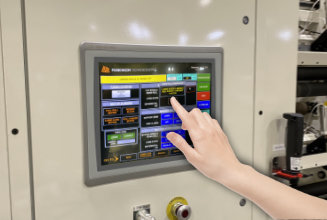by Brian Lundgren , Director of Business Development & Marketing

When assessing the performance of web processing machinery, like slitter rewinders and continuous belt screen changers, users often consider the overall throughput, quality of the final product, and its safety features. These considerations are essential, but it’s important not to overlook one of the most important features of a well-engineered machine, the user interface (UI).
The approach to a machine interface is similar to how a software company would create the user experience (UX). The user interface is the look and feel while the user experience is the interactive design, the functionality, and the connection between man and machine. A machine will never reach its true potential if it cannot be used intuitively. A machine’s UX should have a high level of control while increasing the comfort level of usability and reducing the cognitive load.
An operator needs to have a high level of confidence in the machine interface without feeling overwhelmed with what might be deemed as excessive features, also known as too many “bells and whistles.” As machines advance and become more sophisticated to handle high product throughput, quality, and safety, the user’s experience shouldn’t feel overwhelming or cumbersome to navigate.
It might be easy and intuitive for those who engineer and program the interfaces, but the challenge lies with designing an experience for others. Creating an enjoyable experience for those who spend a vast amount of time with the machine is where usability testing is utilized. By evaluating the interaction between the operator and machine, manufacturers can better understand how to design the user interface. These types of evaluations are irreplaceable in establishing useability best practices.
Manufacturers can also utilize Industrial Internet of Things (IIoT) technologies to update a machine’s UI when new advancements and features are available. Similar to how certain car manufacturers can upload their operating systems remotely, so to can machine builders. However, physical components would not have the same ease of upgrading without overcoming logistic limitations.
Overall, most of us barely utilize the full capability of the computers we depend on every day. Similarly, computers are integrated into industrial machines, with programmability and data flow limited only by our imagination. The right approach in developing a machine’s user interface is to assess user expectations and experience from a practical and intuitive perspective.